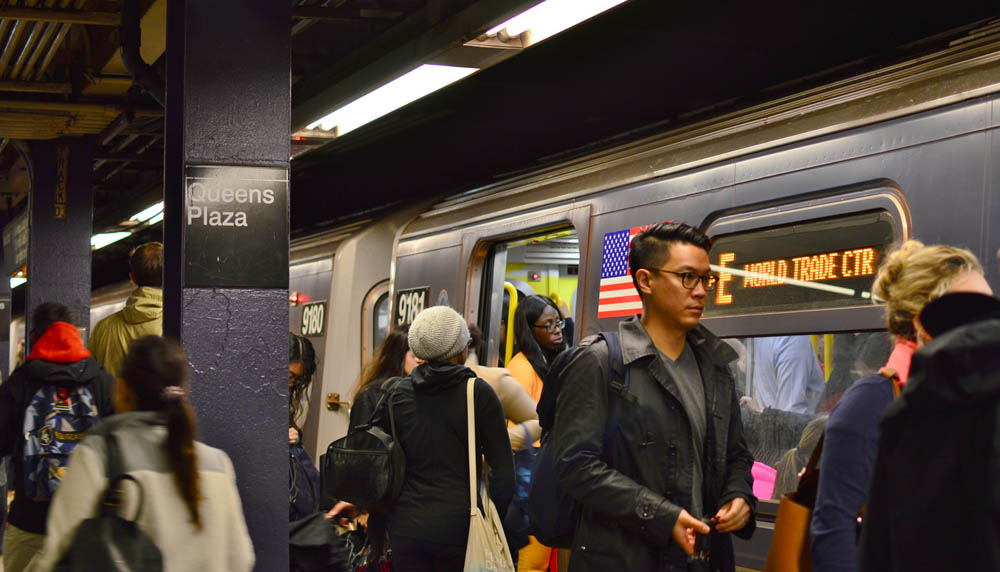New York is the country’s mass-transit leader — and if America is to continue to grow without condemning people to hours-long car commutes on ever-wider highways, the rest of the country will have to emulate its apartment-style living and dependence on trains and buses. Why, then, are New York’s supposedly progressive, environmentally minded leaders turning their backs on the subway system?
Last week, the state-controlled MTA updated its budget for next year — perhaps explaining why Chairman Joe Lhota quit abruptly the week before. The $16.7 billion budget is a disaster. Even though we’re not in a recession, the MTA faces a $244 million budget deficit for next year, widening to $1.6 billion by 2022.
So, fares are going up: The MTA proposed hiking the monthly MetroCard by 5 percent, to $127 from $121, and increasing the single ride from $2.75 to $3, starting next spring.
“The [MTA's] $16.7 billion budget is a disaster.”
There’s nothing wrong with fare hikes to keep up with inflation — except that doesn’t solve the problem. Even with riders’ extra money, the MTA still faces a half-billion-dollar deficit in just another year, growing to $1 billion annually by 2022.
So what is the MTA doing? If it doesn’t get oodles more money from some new state tax — Gov. Cuomo prefers congestion pricing, Mayor de Blasio prefers an additional “millionaires” tax — it is giving up.
In the authority’s budget documents, it makes a startling statement: Subway ridership, it notes, is “not rebounding.”
The solution: less service. The MTA will make “adjustments beginning in 2020 to save $41 million annually, with reductions of $10 million for subway service and $31 million for bus service.”
This makes no sense: Ridership has fallen in the past two years because service became unreliable, with trains packed beyond capacity and buses stuck in traffic.
And the whole point of the MTA spending $850 million in “emergency” money since 2017 was to regain the fleeing public’s trust.
But the MTA proposes to make service even worse.
Additional fare hikes of up to 20 percent — meaning $24 more for a monthly Metrocard — early in the next decade will repel riders, too.
This is the same short-termism that got the MTA into its current crisis. Losing customers means losing money. A big part of the MTA’s deficit is $500 million over five years in decreased ridership.
Giving up on riders poses a huge problem for the city, too. Two days before the MTA made its crisis budget presentation, Amazon announced it was bringing up to 40,000 jobs here. Even without Amazon, a healthy economy attracts new people and jobs.
How do Gov. Cuomo and Mayor de Blasio propose that those people get around, if not on the subways and buses — in private cars? That just condemns the city to far worse gridlock — and pollution — than today.
A paranoiac might think Cuomo wants the MTA to accentuate the bad news, because he wants to sell a Manhattan congestion-pricing charge to the Legislature. Cuomo’s spokesperson even said the MTA shouldn’t hike fares “until riders get the service they deserve” — setting up a PR-friendly rescue of riders by the gov from increased prices.
But it’s hard to overstate the transit crisis. Congestion pricing might bring in $2 billion a year, but if that simply goes to feed the MTA’s ever-growing costs, little will remain for subway chief Andy Byford’s much-heralded transit modernization plan.
“The MTA’s contract with its biggest union, the Transport Workers, is up next spring. ... [and] the agency is budgeting for 2 percent or so annual wage increases.”
About those ever-growing costs: The MTA’s biggest cost is labor. But despite asking working-class and middle-class riders to pay a lot more for less service, the authority says nothing systemic about trying to cut labor costs.
The MTA’s contract with its biggest union, the Transport Workers, is up next spring. Though conspicuously quiet on the matter, the agency is budgeting for 2 percent or so annual wage increases. But why not a wage freeze, if it’s truly in a crisis, unless the TWU can find big efficiencies to keep overall costs flat?
Why not take this opportunity to do something creative — not just with the TWU but other unions, too? In Europe people access commuter railroads via gated entry, like our subways, saving money on conductors. Phased in, such automation here wouldn’t require layoffs; the MTA just wouldn’t replace some retiring workers.
It’s hard to do these things without a leader — and with Lhota’s departure, the MTA is rudderless. Counterintuitively, Cuomo should pick someone who will make his life harder, not easier, in the short term. Tough choices will improve riders’ experience in the years to come.
This piece originally appeared in the New York Post
______________________
Nicole Gelinas is a senior fellow at the Manhattan Institute and contributing editor at City Journal. Follow her on Twitter here.
This piece originally appeared in New York Post
